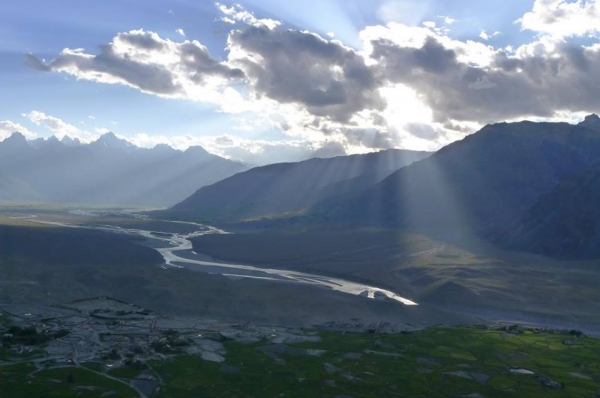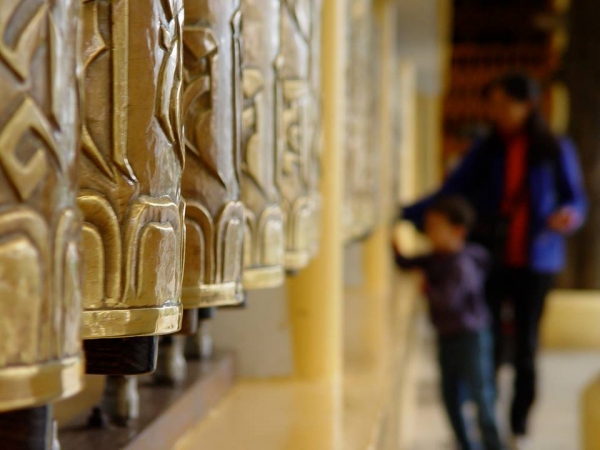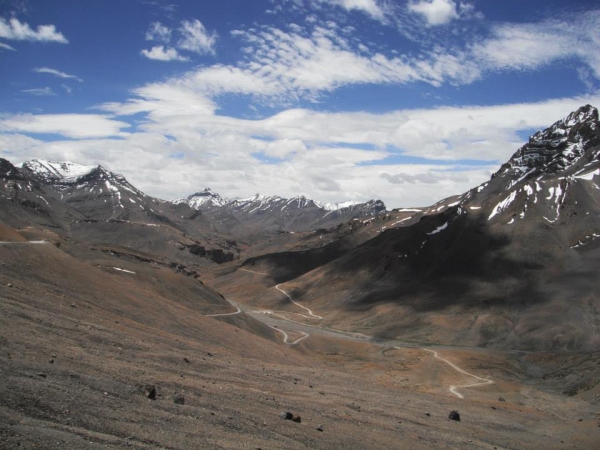Don't miss out on the best jobs!
Subscribe to HelpGoAbroad and weekly we will sent you an email with latest job posts. Provide your email address below
India: Sprawling metropolises, streets jammed with people, and vast slums are usually some of the first images that come to mind. With a population of over 1 billion, India is not known to be a place of isolation. In the lowlands, it is nearly impossible to get away from the crowds and even the smallest towns have a high population density. But as you venture north of Delhi, up into the foothills of the Himalayas, you’ll find yourself in a very different kind of India. Smoggy cities give way to terraced rice paddies and brightly-colored clusters of villages perched on hillsides. The population is sparser and the scenery is more dramatic the further north you go, and transportation becomes increasingly difficult.
Jammu and Kashmir is the northernmost Indian state. It shares a border with Chinese-occupied Tibet to the east, Pakistan to the west, and the states of Himachal Pradesh and Punjab to the south. The topography is dominated by mountains: the mighty Himalayas. The state is divided into three distinct regions, each with its own unique mix of beauty, history, culture, and activities. The state of Kashmir is known for its scenery, Jammu for its Hindu shrines, and Ladakh for its remoteness and Tibetan festivals. The religious and cultural influences in the state of Jammu and Kashmir swirl together in an intoxicating medley like the aromas of masala: you can’t quite differentiate one spice from the other but they create a rich, dynamic flavor that won’t leave your palate for awhile.
Why Go?
If adventurous travels, remote mountain get-a-ways, and ancient culture sound appetizing to you, the state of Jammu and Kashmir might be right up your alley. There are three main tourist cities in the state, and each are great jumping off points for more remote trekking, skiing, white-water rafting, and other outdoor retreats. If you plan to mosey all the way to the north while traveling abroad in India, it’s worth it to experience every corner of the state that you can.
Jammu is the southern-most district of the state and the jumping-off point for people who are traveling the north by land. Kashmir, the largest and most infamous district, lies to the north. The other-worldly natural beauty of the mountain-valley landscape is the main appeal. Ladakh, to the east, is dominated by Tibetan influence. Its location high in the Himalayas makes it one of the most remote destinations in the country. Anyone seeking an authentic look at Tibetan culture can find it here.
What To Do?
Srinagar
The biggest city in the state is Srinagar, which is located in Kashmir. The city sits at 1,730 meters above sea level in the Kashmir valley, which is famous for its beautiful lakes and gardens. Kashmir is also known as “Heaven on Earth” because of the scenery, and it is a popular honeymoon destination for tourists. Houseboats float on the serene Dal Lake and exquisite gardens line the shores. These Mughal gardens were created centuries ago and are still perfectly maintained. Mosques from the same era tower over some of the gardens. Srinagar is also famous for its tulip fields, which are in full bloom in the springtime.
Gulmarg Hill Resort, not far from the city of Srinagar, is a popular ski destination in the wintertime. The mountains’ gradual slopes are perfect for beginners, but a new cable car can transport more advanced skiers up the mountain for more technical runs. If you’re more inclined to the wetter version of skiing, the many lakes and rivers around the state of Kashmir might be your preferred destination. Kayaking and white-water rafting are also popular.
Jammu
The southernmost portion of the state lies in the forested foothills of the mountains to the north, the beginning of the drastic change from the dusty lowlands in the south of India. A handful of different semi-nomadic ethnic groups populate the district of Jammu, living traditional lifestyles within their own cultures. Many Hindu pilgrims come to the state to visit temples and other sacred spaces. Mansar Lake and Patnitop hill resort are two tourist destinations outside the city of Jammu, but the majority of travelers pass through this state on their way north, only stopping for a day or two to check out some of the ancient Hindu architecture.
Jammu, the winter capital of the state and the largest city in the district, is the city of temples. The population is mainly Hindu, unlike its neighbors, and the influence here is obvious.
Leh
Leh, the largest city in the province of Ladakh in the far northeast of the state, is called “Little Tibet,” and rightly so. Some people say this part of India is the only place in the world where traditional Tibetan lifestyles are lived freely, after the Chinese invasion. The population is mostly Buddhist so Tibetan architecture, temples, and holidays are prevalent here. Leh is also the most remote corner of the country, but the difficult journey is well worth it. Set high in the Himalayas, the scenery is almost other-worldly.
Temples and people-watching are common tourist activities in town, but amazing treks into the Himalayas leave from Leh. Tibetan festivals are celebrated with fervor in town, and if you’re planning a visit, try to go during one of them.
How to Get There
There are airports in each of the major cities in the north with connections to Delhi. If you’re traveling by land, the journey can be a bit treacherous and you’ll have to change trains, busses, and cars multiple times to make it all the way to Leh. The infamous Indian railway system ends in Jammu in the southern part of the state, so cars and busses are the only means of transportation if you wish to venture further in. Tata Sumos, or jeeps, are the best way to get around and you can find drivers looking to fill all their seats outside of the train station.
A Few Warnings
Sadly, the state of Jammu and Kashmir is not the safest place to travel in India. The political atmosphere in Kashmir is often uneasy due to border disputes, and areas around the Pakistani border can be extremely dangerous. At the moment, shots are being fired between the Indian and Pakistani armies. Make sure you are aware of the current situation before planning a trip, and be ready for sudden changes in plans if something does happen. Ladakh is considered perfectly safe, though, and there has been no turmoil there for a very long time.
Kashmir also recently experienced a devastating series of floods, so travel there is restricted in some places. Be sure to do your research before planning a trip, and be ready to be extra cautious in Srinagar, but don’t let these warnings deter you. While traveling abroad in India, a trip to the north is well worth it despite the conflicts.
All photo credit goes to the amazing photographers from the Institute for Village Studies
Sign in to publish a comment



Be the first to comment on this post.